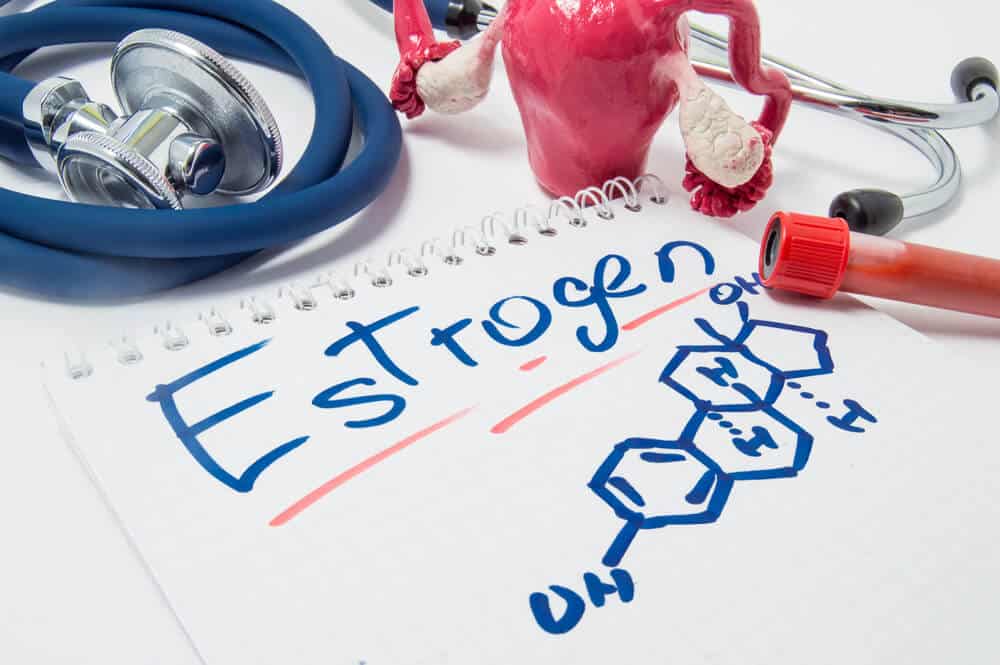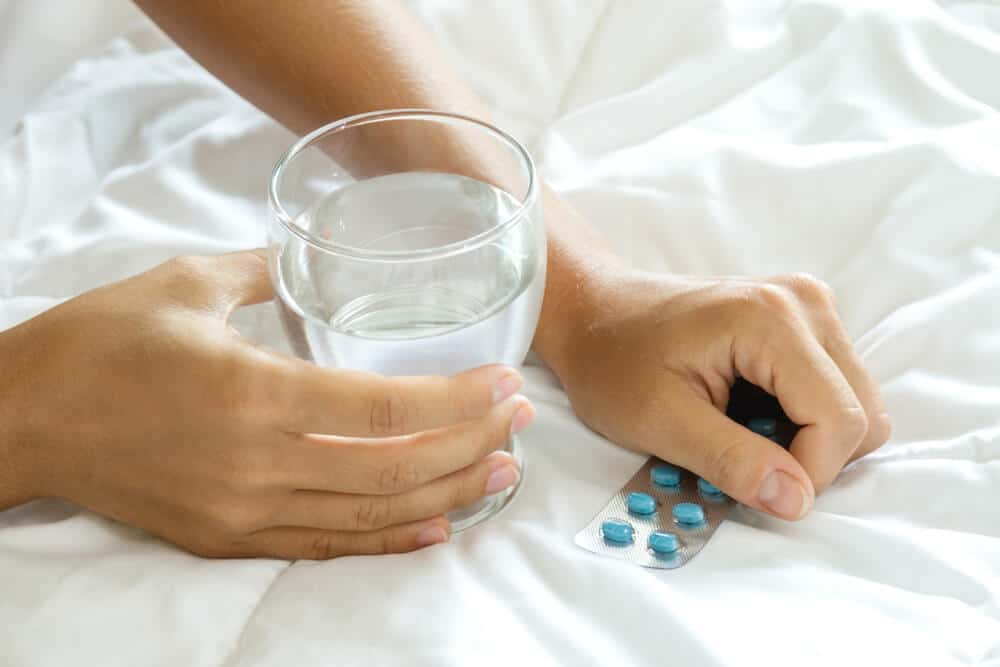Estrogen is a critical hormone that plays a pivotal role in female sexual development and the reproductive system. Also, it’s an essential hormone in other bodily processes. Estrogen levels will fall and rise throughout a woman’s life, but constantly having low estrogen levels can cause several problems, including difficulties conceiving, osteoporosis, and lowered sex drive.
As a matter of fact, low estrogen levels may even lead to painful intercourse (dyspareunia). Fortunately, there are several options regarding dyspareunia treatment in Fort Lauderdale. With help from Dr. Krinsky, women with low estrogen levels can get back on track with their lives as soon as possible.
Let us see the most common low estrogen symptoms and how hypoestrogenism can be treated.
The Impacts of Low Estrogen
Low levels of estrogen can affect everybody but most notably women.
For the most part, the impacts of low estrogen levels will be experienced by women who are:
- Going through menopause or postmenopause: During these periods, the menstrual cycle stops, and the ovaries will no longer produce estrogen. Instead, fat cells will take over the lion’s share of estrogen production.
- Had their ovaries injured or removed: When the ovaries have been surgically removed or damaged by radiation therapy, the body will only produce limited amounts of the hormone.
The Effects of Low Estrogen Levels in Women

Hypoestrogenism can affect the female body in several ways, based on the stages of sexual development.
- At younger ages, low estrogen levels can delay puberty, slow down or even prevent sexual development.
- In menopause and in perimenopause, it can lead to hot flashes, low sec drive, and painful intercourse.
Low Estrogen Symptoms
Mostly, the signs of low estrogen overlap with the most common postmenopausal and menopause symptoms. Still, what women experience will depend on what’s causing the decreased levels of the hormone in the first place.
Still, the most common low estrogen level symptoms include:
- Skin dryness
- Tenderness in the breasts
- Brittle and weak bones
- Trouble with focusing
- Mood swings and irritability
- Vaginal atrophy and dryness
- Night sweats
- Hot flashes
- Amenorrhea – irregular or no periods
- Weight gain
- Headaches
- Painful intercourse
- Fatigue
- Insomnia
- Decreased libido
What Causes Low Estrogen Levels?
It’s normal that a woman’s estrogen levels will decrease with age, especially during and after menopause. However, when the decrease in the hormone isn’t the result of menopause, other conditions might be causing the issue.
- Age: as mentioned above, a drop in estrogen is natural during and after menopause, as the ovaries stop producing estrogen and fat cells take over.
- Genetic conditions: Fragile X syndrome and Turner syndrome can both lead to decreased estrogen production.
- Eating disorders: Bulimia and anorexia can both cause hormone imbalances, lowering estrogen in the process.
- Premature menopause or primary ovarian insufficiency: This condition causes the ovaries to stop producing eggs before women turn 40, and the patient goes through early menopause.
- Autoimmune diseases that attack the ovaries can also impact estrogen production.
- Issues with the pituitary gland: This gland signals the ovaries to produce estrogen. If the gland doesn’t function properly, it might not send signals to the ovaries to produce enough estrogen.
- Treatments that impact the function of the ovaries: Treatments for cancer like chemo and radiation therapy may both damage the ovaries and might even injure them to the point that they stop secreting normal amounts of estrogen. The removal of the ovaries (also called an oophorectomy) can also impair estrogen production.
- Hypothalamic amenorrhea: Excessive physical stress and malnourishment may prevent the brain from releasing enough of the hormones that are responsible for activating estrogen secretion in the ovaries.
How are Low Estrogen Levels Diagnosed?
In total, the body makes three different types of estrogen. Experts can order a simple blood test to see whether there’s an imbalance.
The three types of estrogen are:
- Estrone (E1): This is a less potent form of estradiol and the primary hormone the body will produce during menopause and postmenopause
- Estradiol (E2): The primary estrogen variant the female body reproduces during the reproductive years.
- Estriol (E3): This is the primary form of estrogen the female body will produce during pregnancy.
How to Increase Estrogen: Treatment and Management
Generally, there are two main routes women can take to restore their estrogen levels. More precisely, depending on their condition, they can increase their hormone levels naturally or with the help of therapy.
How to Increase Estrogen Naturally?
Diet and lifestyle changes can often help fix hormonal imbalances. Consult with your doctor and try:
- Maintaining a healthy weight: being underweight can lower hormone levels, so consult with your doctor about and create a healthy meal plan.
- Exercise: Moderation is the key. Overexercising can also lead to low estrogen levels, so try to avoid overdoing it.
- Reducing Stress: Stress hormones can also cause hormonal imbalances in the reproductive system. Effective stress management can help with keeping hormone levels in check and can boost overall well-being as well.
- Sleep more: Aim at getting seven to nine hours of sleep every night to help you recharge your body and hormone levels.
How to Increase Estrogen with the Help of Therapy

Hormone replacement therapy is a prevalent treatment to increase estrogen levels during menopause and postmenopause. The therapy involves taking synthetic estrogen to restore hormone levels to within normal ranges.
Usually, there are two HT types, estrogen/progestin hormone therapy, and estrogen therapy.
The FDA has only approved a few reasons to use hormone replacement therapy for body-wide therapy. These hot flashes and low bone mineral density.
On the other hand, vaginal estrogen (vaginal inserts, creams, and rings) is used to help with painful sex and vaginal dryness.
Estrogen therapy will involve using only estrogen without progesterone. Most often, providers will prescribe this therapy type after undergoing a hysterectomy.
Estrogen progesterone/progestin EPT therapy is mostly prescribed for patients who still have a uterus to balance out overall hormonal levels and to lover side effects and potential combinations.
Hormone replacement therapy can be an effective treatment to restore estrogen levels; however, patients should always discuss the involved risks and benefits with their healthcare providers before making a decision.
There’s Help
Unfortunately, women can’t prevent age-related decreases in their estrogen levels. Still, healthy habits can help with balancing out hormone levels and can help with feeling better overall. Also, moderate exercise, getting enough sleep, and a healthy diet can make a huge difference in women who deal with hormone imbalances due to their lifestyle.
In both cases, a help of a knowledgeable expert can go a long way in opting for the best treatment and/or lifestyle changes.
That being said, whenever you are experiencing symptoms, if possible estrogen imbalances, always opt for professional help. With the help of an experienced healthcare provider such as Dr. Krinsky, you will be able to combat the symptoms of low estrogen and will be able to enjoy life to the fullest.


